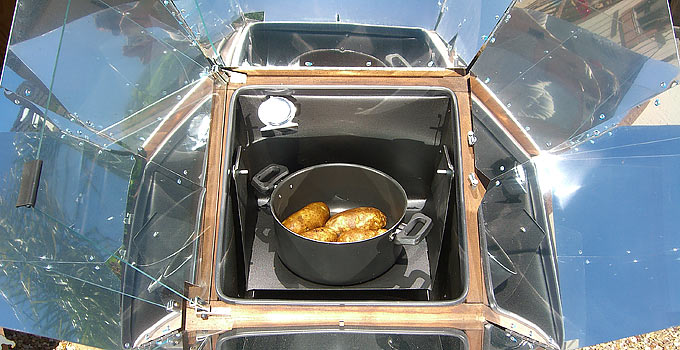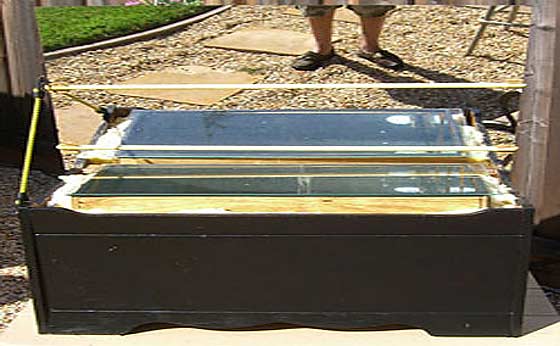How Do Solar Ovens Work

The answer may sound pretty basic, because it is!
And because of the relative simplicity, you could even make one yourself.
How about some lifestyle and preparedness for the outdoor kitchen? A solar oven is a great way to harness free energy to get the job done.
So, how do solar ovens work ?
Solar ovens work on one basic principle which itself can be broken down into several areas to address: Solar ovens convert sunlight into heat energy.
(I told you it was pretty basic)
But how does it do that?
Absorb the energy sufficiently enough to raise the temperature within the solar oven to at least 165 degrees F. And then keep it there (or higher!) long enough to cook your food.
– Solar Energy Absorption
– Insulate & Retain Heat
Why at least 165 degrees? Because that’s the internal temperature at which meats become safe to eat (beef can be 145). While you should easily be able to reach higher temperatures within a solar oven, in theory even if it sat at 165 for hours, eventually it will cook your meat through and through (like a slow cooker or crockpot).
How Do Solar Ovens Work
Lets simply look at solar absorption and retainment of that heat.
Solar Energy Absorption
This could be as simple as setting a covered black pot in direct sunlight. The black will absorb lots more energy than other colors (don’t use reflective pots!).
But lets take it a step further… If that black pot is setting within an enclosed chamber with a ‘see-through’ (e.g. glass) top, not only will the sunlight heat up the black pot but the chamber itself will heat up too, making it hotter.
Now if the sides and bottom of the internal chamber (box) are black, the process of heating will be even more efficient (hotter).
But wait, there’s more! If we fashion some sort of reflector that reflects even more of the sunlight into the chamber, we’ll harness even more energy!
Insulate & Retain The Heat
We can really supercharge the solar oven by insulating the chamber (box) which will keep much of the heat inside (getting hotter!).
Additionally, a solar oven that’s insulated will better retain the heat during intermittent periods when the sun may become obscured by clouds.
Solar Oven DIY
Using the principles above in “how do solar ovens work”, you can build your own (do it yourself) solar oven.
Years ago I had built a few diy solar ovens. They were basic rectangular boxes that I cut and assembled out of spare plywood. I had kept some scrap glass around so all I had to do was cut it to the dimensions of the box (for the top). Also had an old mirror which I glued to another piece of wood and fastened it to the solar oven with hinges (and a method of adjusting and holding an angle for reflection).
Subsequent versions improved on insulation (built a box in a box with insulation between). I also added a fairly thick piece of metal (painted black) on the bottom which absorbed and held heat).
Here’s one of them I built back in 2010:

All you have to do is search for solar oven images on the internet to get ideas (or use your imagination).
I’ve even heard of a solar oven pizza box!
Professionally Built Solar Oven
Another option of course is to buy a solar oven already made. I eventually did that. To this day I still have this solar oven which has performed extremely well when I use it on occasion. It wasn’t cheap, but over the years I’m glad I have it.
All American Sun Oven- The Ultimate Solar Appliance
More: Cooking Without Electricity – Solar Oven Cooker
More: Solar Oven Bread
